On August 1st, we highlighted the World Lung Cancer Day. This day was created to raise awareness and support people with lung cancer. Throughout the month of August, we conducted an informational campaign on IMP Diagnostics’ social media channels to raise awareness among our followers about the various aspects of molecular oncology.
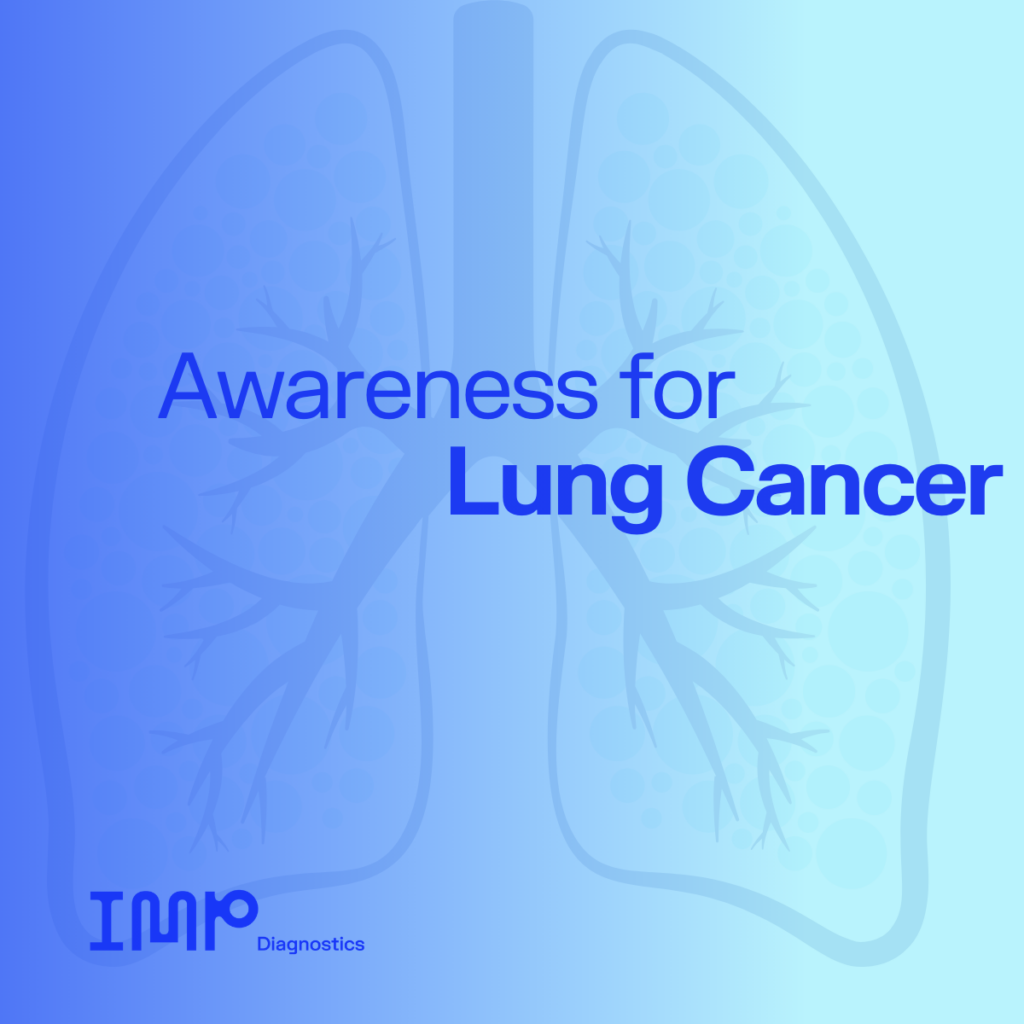
Currently, lung cancer is responsible for 1.8 million deaths per year worldwide. This figure represents 18% of all cancer-related deaths, while Portugal shows a slightly lower rate, with 15.4% of all cancer-related deaths attributed to lung cancer. In 2022, it is estimated that around 2.2 million cases were confirmed globally, accounting for approximately 11.6% of all new cancer cases.
The stage of the disease at the time of diagnosis significantly affects the relative survival rate. Despite intense research into predictive biomarkers for the success of targeted therapies, the 5-year survival rate remains only 26.7%³. Smoking continues to be the biggest risk factor for the development of lung cancer, increasing this risk by nearly 30 times.
The Patient’s Journey
Lung cancer can develop to advanced stages without significant symptoms, and it is not uncommon for patients to be diagnosed at metastatic stages. In other cases, patients seek medical care after experiencing a clinical history of cough, chest pain or discomfort, weight loss, and, less commonly, hemoptysis. In a clinical setting, considering potential risk factors, the doctor may use imaging tests, typically a chest X-ray, to detect abnormalities in pulmonary morphology. Additionally, the patient may undergo other examinations, such as computed tomography (CT), which allows for more detailed localization of the tumor mass in relation to other anatomical structures.
To confirm and specify the diagnosis, pathological anatomy tests should be requested. Typically, cytopathological exams are performed after analyzing sputum, bronchial lavage/aspiration, and/or fine needle aspiration biopsy, while histological exams are carried out after transthoracic biopsy or bronchoscopy-guided biopsy.
At IMP Diagnostics, we are well-equipped to properly diagnose these patients. Alongside a comprehensive portfolio of tests with the most relevant analyses for guiding therapies and improving patient treatment, our specialized diagnostic teams in cytopathology and pulmonary pathology support the referring clinician in providing a quick and accurate response to the patient.
At the time of cytological or histopathological diagnosis, it is estimated that approximately 10 to 15% of all lung cancer cases correspond to small cell lung carcinoma, while about 80 to 85% of cases correspond to non-small cell lung carcinoma. Within non-small cell carcinomas, the following subtypes are distinguished: squamous cell carcinoma, large cell carcinoma, and adenocarcinoma.
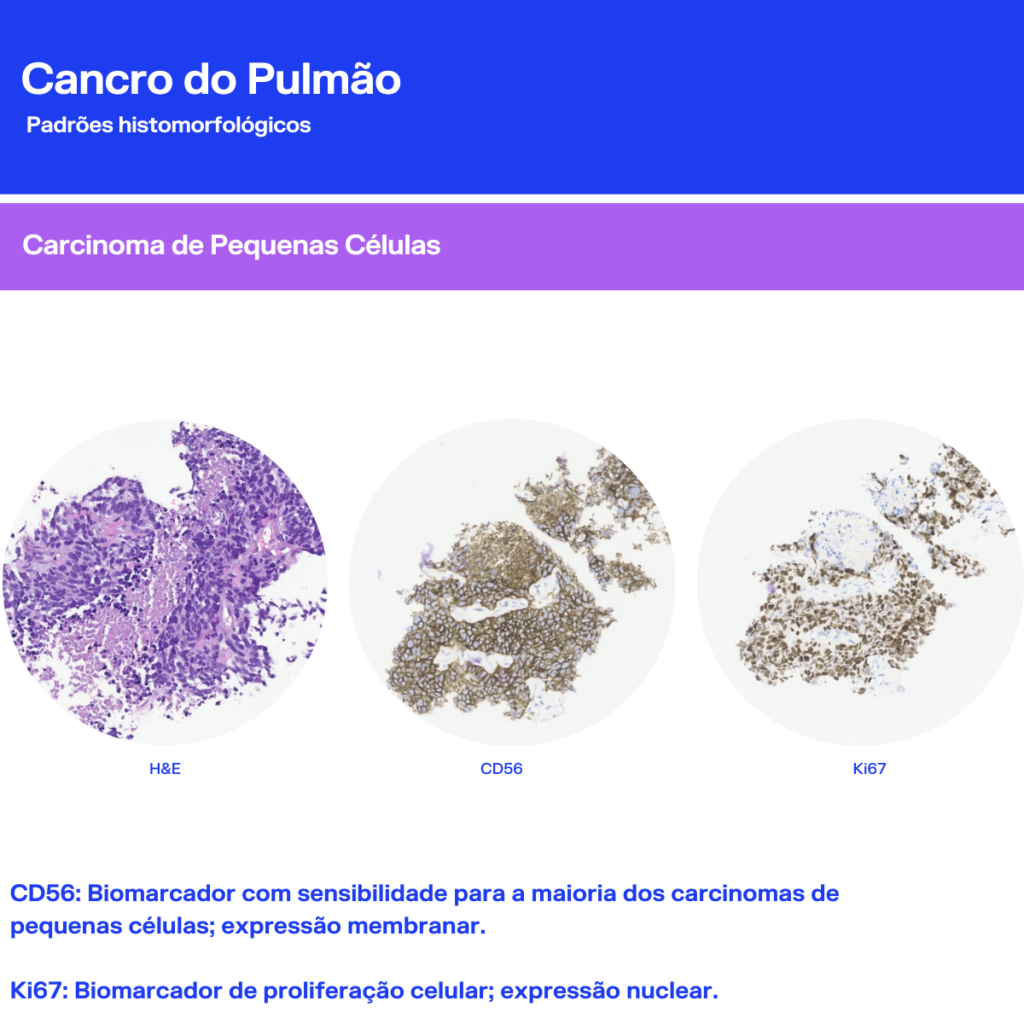
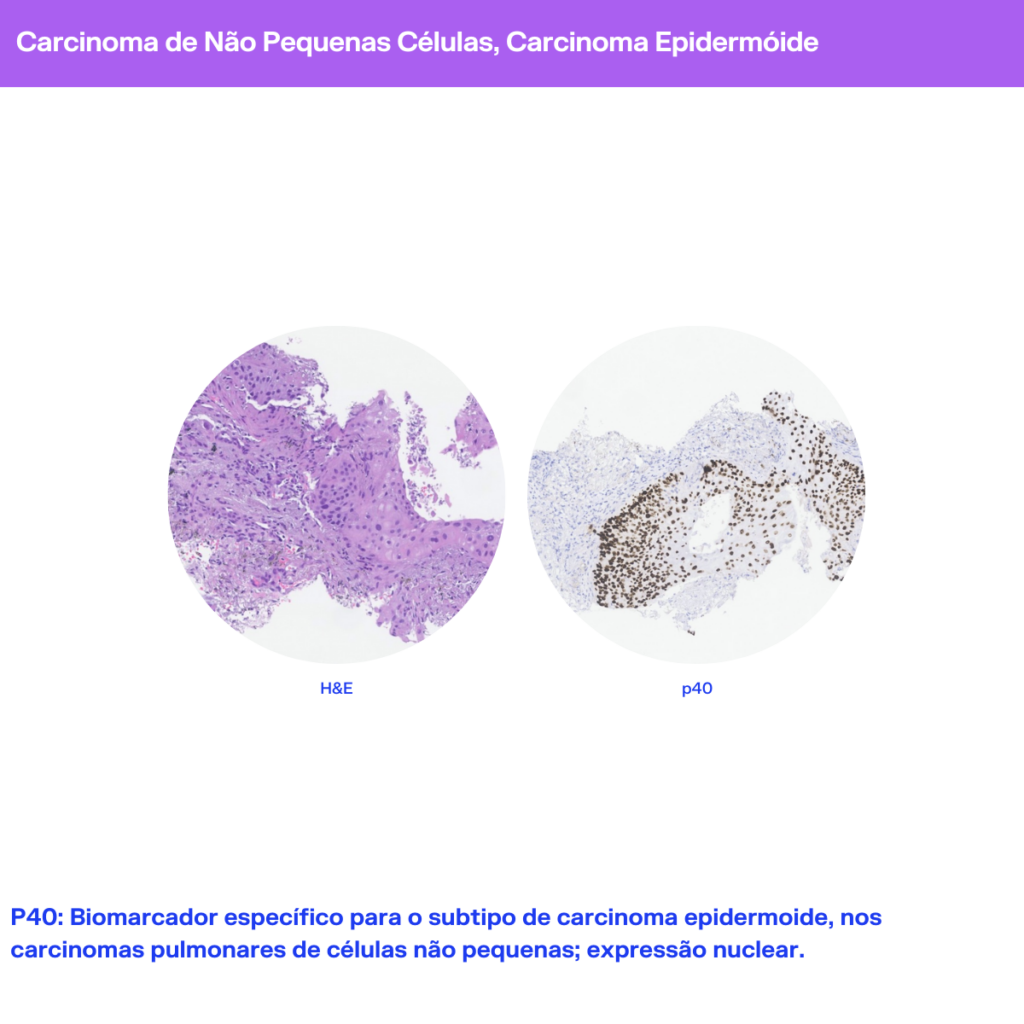
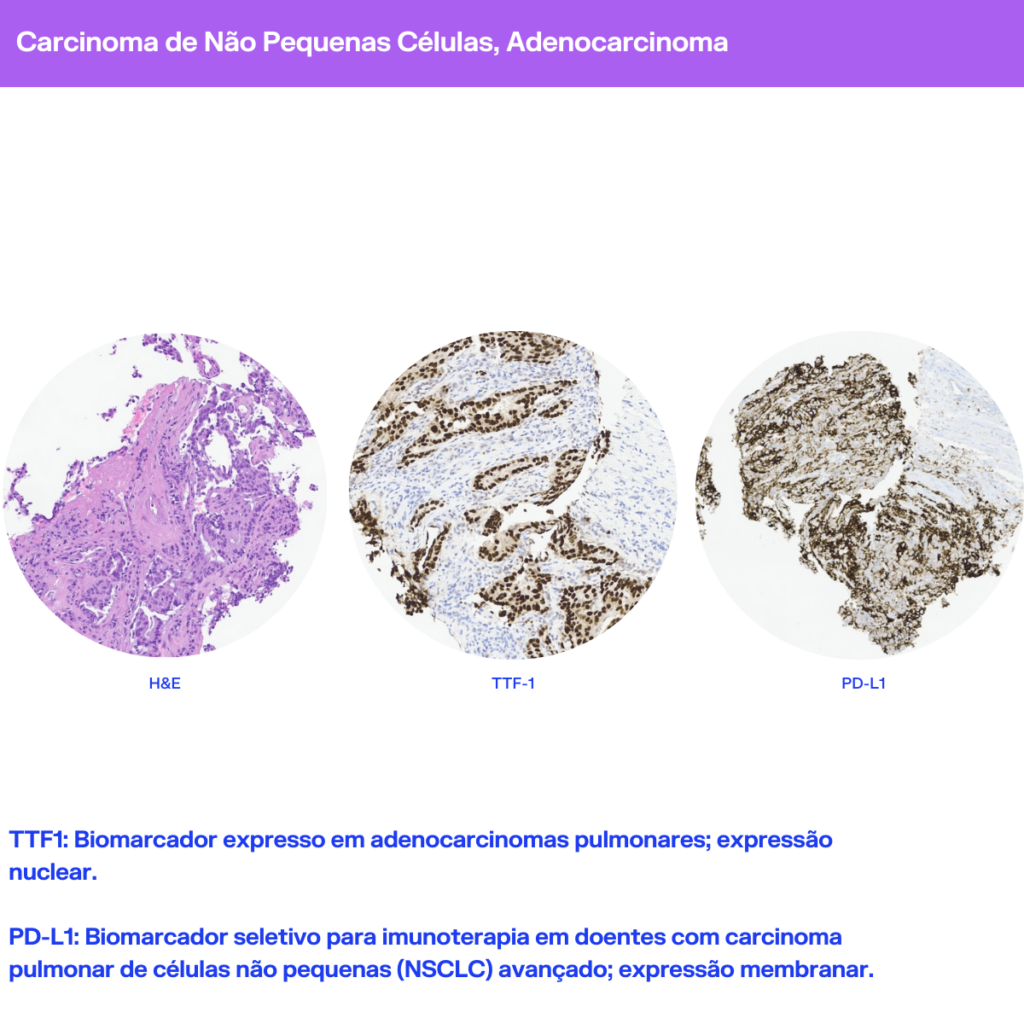
In the diagnosis of non-small cell lung carcinoma, various genetic alterations are identified as having an impact on therapy selection. Assessing the genetic profile of tumor cells is essential for guiding and enhancing the effectiveness of therapies in patients, as well as avoiding the administration of non-beneficial drugs.
Molecular tumor testing is recommended for formalin-fixed, paraffin-embedded samples, as well as for cytological preparations. When possible, the National Comprehensive Cancer Network (NCCN) guidelines suggest using an extensive panel through Next-Generation Sequencing (NGS). Other techniques, such as Real-Time PCR and Sanger Sequencing, can be used for more targeted investigations, provided that a sufficient amount of tumor area is available for nucleic acid extraction. Finally, Fluorescence In Situ Hybridization (FISH) can be employed to analyze copy number, amplification, and chromosomal alterations (such as gene rearrangements) when applicable.
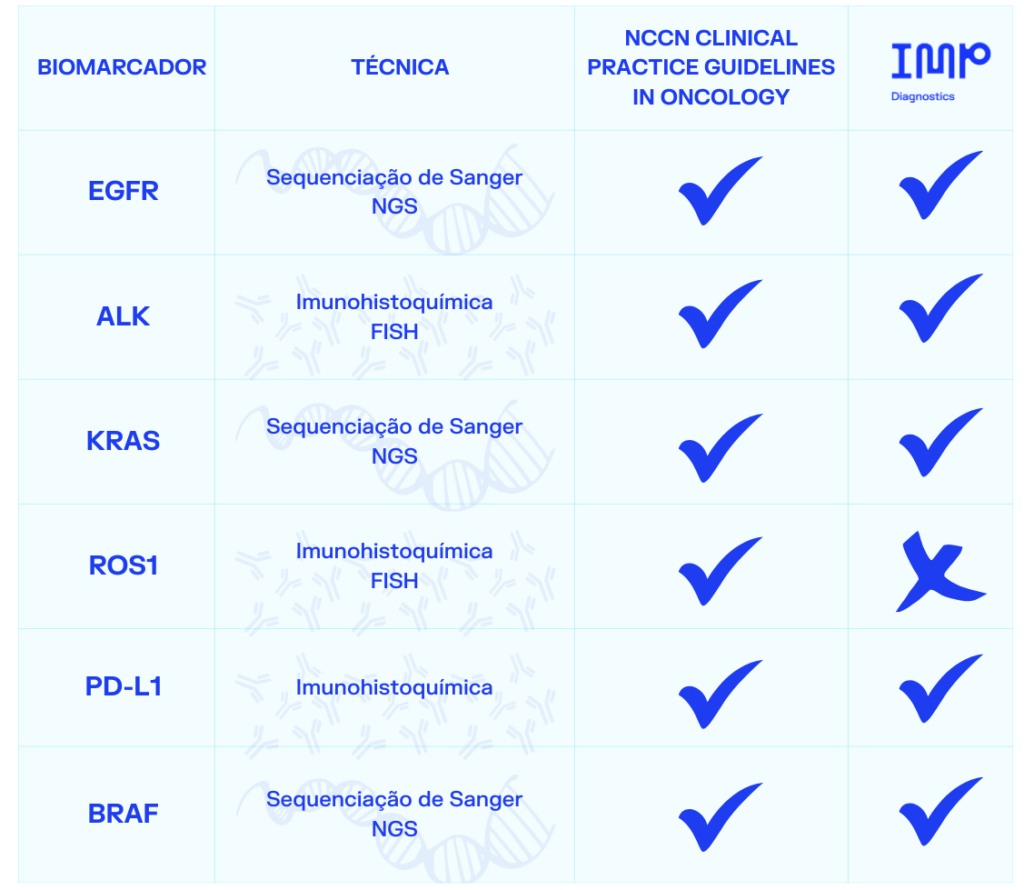
Our panel of complementary tests includes the following:
- EGFR gene mutation analysis
- Next-Generation Sequencing (NGS) of an extensive genetic panel covering 52 genes, including ALK, BRAF, EGFR, HER2, HER4, KRAS, MET, NRAS, PIK3CA, NTRK (1, 2, and 3), ROS1, and RET
- Immunohistochemical analysis of the PD-L1 biomarker expression
- Study of ALK rearrangements
- Genetic analysis of KRAS and NRAS mutational status
Additionally, the immunohistochemical evaluation of the PD-L1 biomarker is particularly important for cancer patients, as it identifies those who are eligible for immunotherapy.
Prevention
Lung cancer prevention primarily focuses on reducing known risk factors, with smoking being the most significant. It is estimated that smoking is responsible for approximately 85% of lung cancer cases.
Several studies have shown that quitting smoking can substantially reduce the risk of developing lung cancer, regardless of the age at which a person quits. Additionally, avoiding exposure to secondhand smoke is also important. It is also worth noting that maintaining a healthy lifestyle remains a crucial preventive measure for this and other cancers.
Finally, awareness and education about risk factors and prevention strategies are essential for reducing the incidence of lung cancer. Smoking cessation programs can save lives by informing the public about measures they can take to protect their health. Following the work of associations, medical societies, and research groups can support the discovery of innovative treatments, new diagnostic approaches, and new strategies for screening and/or preventing this disease.
On our end, you can rely on accurate diagnosis within a short timeframe.
By Cátia Carvalho, IMP Diagnostics.
Reviewed by Sofia Campelos, IMP Diagnostics.
